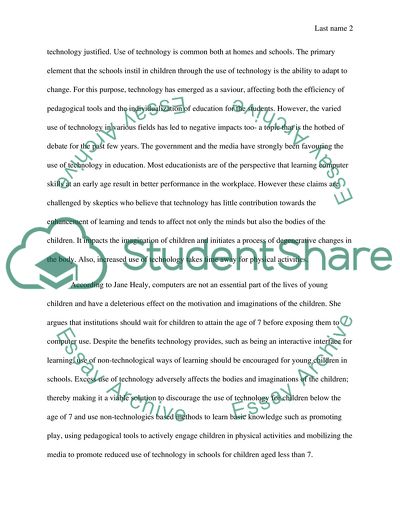Cite this document
(Children and Technology Research Paper Example | Topics and Well Written Essays - 2750 words, n.d.)
Children and Technology Research Paper Example | Topics and Well Written Essays - 2750 words. Retrieved from https://studentshare.org/technology/1751512-we-should-not-expose-our-children-to-the-technology-in-an-aerly-age-from-4-6
Children and Technology Research Paper Example | Topics and Well Written Essays - 2750 words. Retrieved from https://studentshare.org/technology/1751512-we-should-not-expose-our-children-to-the-technology-in-an-aerly-age-from-4-6
(Children and Technology Research Paper Example | Topics and Well Written Essays - 2750 Words)
Children and Technology Research Paper Example | Topics and Well Written Essays - 2750 Words. https://studentshare.org/technology/1751512-we-should-not-expose-our-children-to-the-technology-in-an-aerly-age-from-4-6.
Children and Technology Research Paper Example | Topics and Well Written Essays - 2750 Words. https://studentshare.org/technology/1751512-we-should-not-expose-our-children-to-the-technology-in-an-aerly-age-from-4-6.
“Children and Technology Research Paper Example | Topics and Well Written Essays - 2750 Words”, n.d. https://studentshare.org/technology/1751512-we-should-not-expose-our-children-to-the-technology-in-an-aerly-age-from-4-6.


